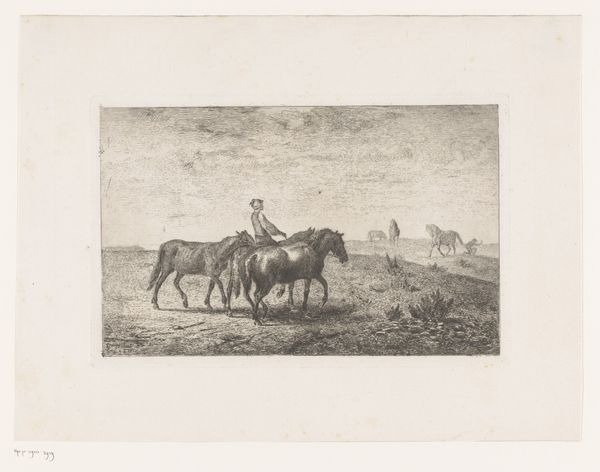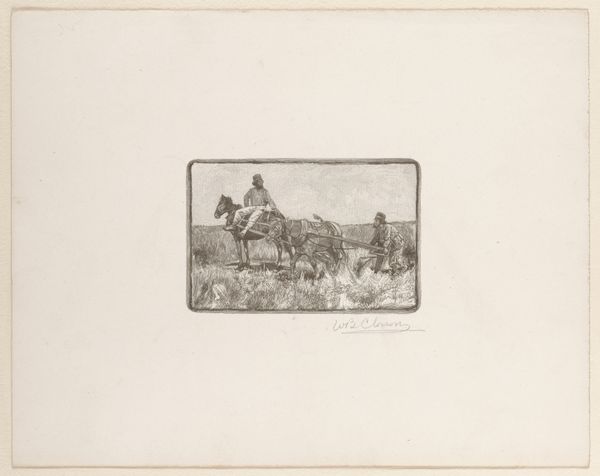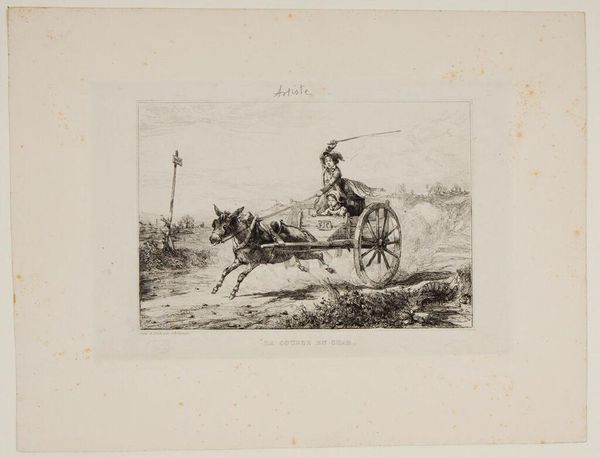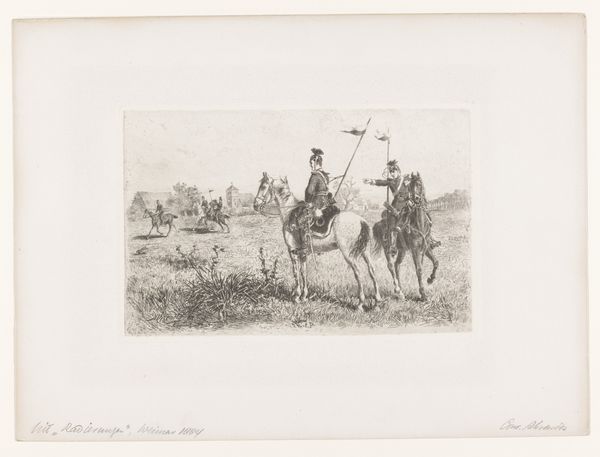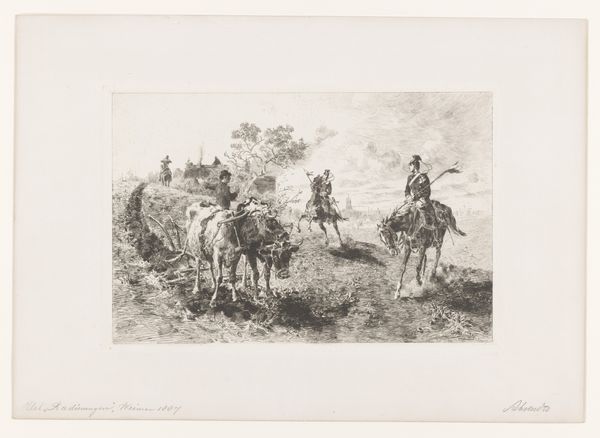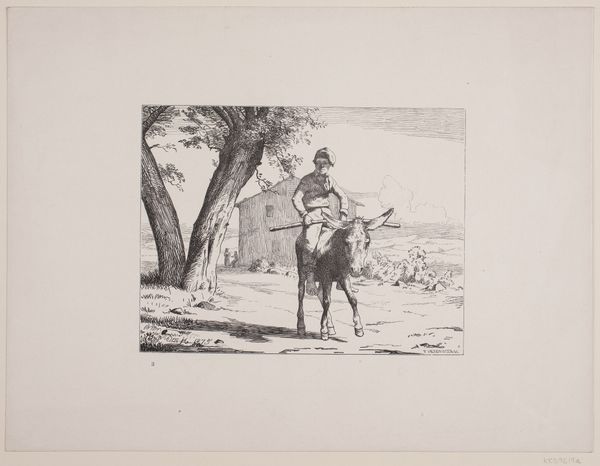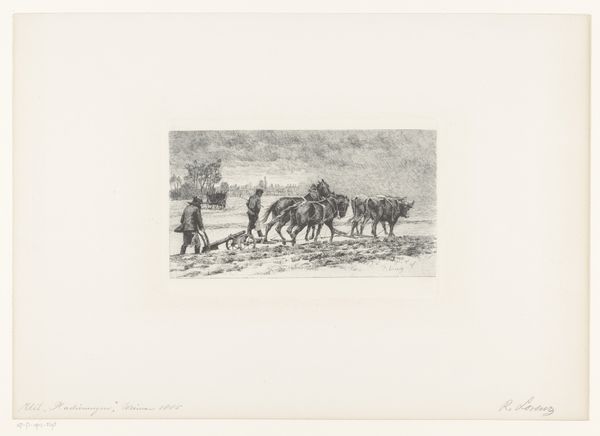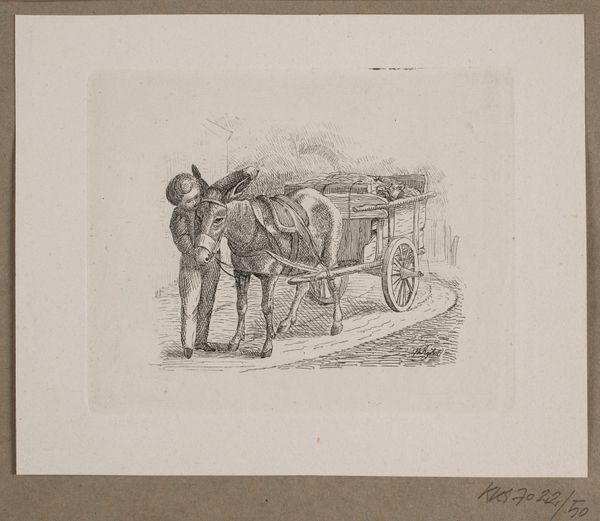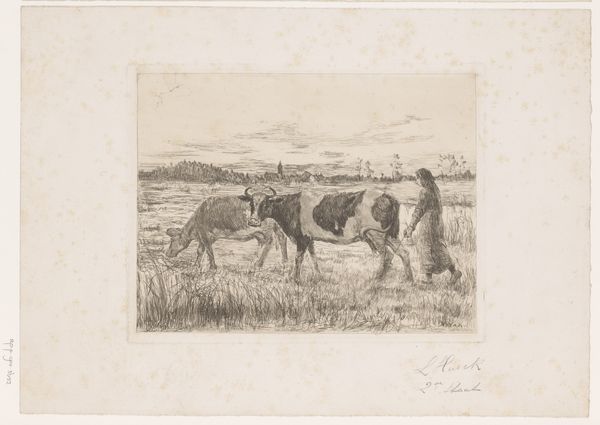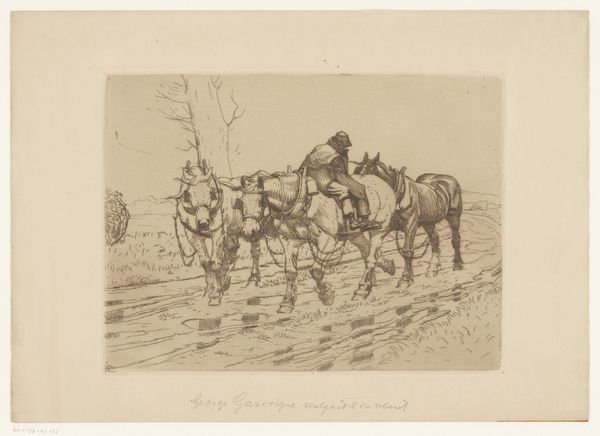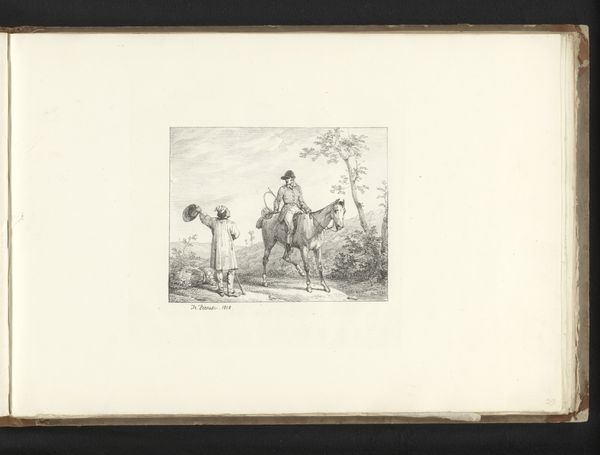
drawing, print, etching, paper
#
drawing
# print
#
etching
#
landscape
#
paper
#
genre-painting
#
realism
Dimensions: height 111 mm, width 150 mm
Copyright: Rijks Museum: Open Domain
Curator: This is "Boerin leidt twee koeien," or "Farmer Woman Leading Two Cows," by Léopold Haeck, likely created between 1878 and 1910. It's an etching, a type of print made on paper. Editor: My first impression is quiet resilience. The simple line work and the limited tones give it a very matter-of-fact feeling. It’s unglamorous; you can almost feel the weight of the labor depicted. Curator: I find that compelling. The image carries so many symbolic threads, doesn’t it? The cow, for instance, is a powerful symbol of fertility and nourishment, central to agrarian life for centuries. Leading the cows shows humanity’s attempt to bring some degree of structure to that chaotic force of nature, both domesticating and controlling it. Editor: True. And speaking of control, the printmaking process itself – the acid etching, the deliberate crafting of the plate – that all speaks to human intervention too. It’s an industrial act, not some romanticized view of pastoral life, although the final object, on paper, tends to look refined and distanced from the labor that brought it into existence. This print allows us to mediate and understand agrarian labor and practices removed from them. Curator: Indeed. The way Haeck renders the woman also piques my interest. Notice how she's positioned on the periphery, yet her role is undeniably central. Her stoicism contrasts vividly with the assumed innocence of the animals, perhaps revealing something profound about the complex symbiosis in that pastoral relationship. It serves as a poignant mirror to societal gender roles as well as how labor has been depicted throughout art history. Editor: Right. You get to thinking about how these kinds of scenes have always served as documentation of specific labor processes – we might be nostalgic about it, but at one time these images spoke to how people fed themselves, paid their bills, consumed goods and services, and related to other economic forces that drove modern industrial society forward. We're witnessing how the print functions to solidify these complex socio-economic relationships that, by this point, have passed through the lenses of the Industrial revolution. Curator: It leaves one pondering the layers of meaning intertwined within a seemingly straightforward landscape genre piece. Haeck uses familiar imagery and, at a second glance, exposes universal experiences and values tied to community, endurance, and survival, prompting a more layered analysis and self reflection. Editor: Ultimately, for me, it brings the everyday reality of agrarian processes and human toil that underpins even the most romanticized visions of country life closer to the surface for closer inspection. It gives us more realistic symbols than romantic ones to help us in future conversations about humanity's relationship to animals, and how essential rural people and labors were for our industrialized predecessors.
Comments
No comments
Be the first to comment and join the conversation on the ultimate creative platform.

